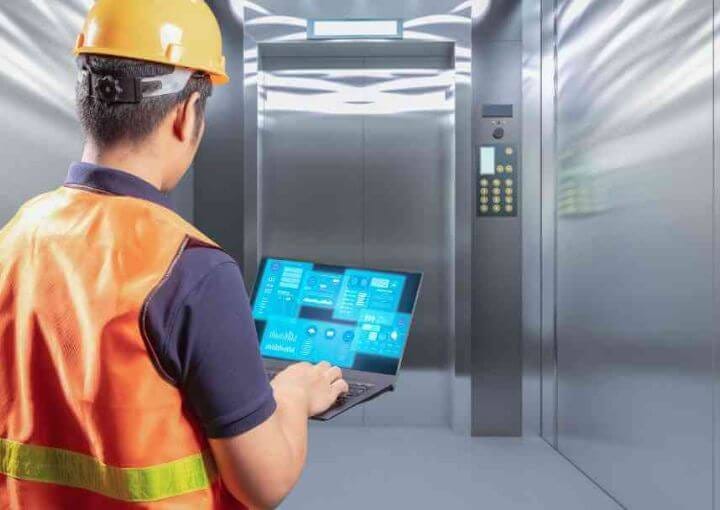Exploring the Significance of Normal Servicing and Inspection of Impaired System Lifts
In the realm of keeping impaired system lifts, routine maintenance and inspection play a critical duty in making sure operational effectiveness and safety compliance. These devices, created to improve availability for individuals with wheelchair difficulties, call for precise focus to detail to assure seamless performance. Beyond conference regulative criteria, the importance of routine maintenance reaches preventative measures, cost-saving benefits, and overall system reliability. By dealing with the important elements of maintenance and assessment, a much deeper understanding arises of the intricate equilibrium in between performance optimization and individual well-being. A closer evaluation of these nuanced facets clarifies the elaborate web of factors to consider that highlight the importance of prioritizing the maintenance of impaired system lifts.
Safety And Security and Compliance Specifications
Just how do safety and conformity requirements make certain the correct performance and security of impaired system lifts? Safety and security and compliance standards play a crucial function in guaranteeing the smooth procedure and safety of impaired system lifts. These requirements are created to maintain the honesty of the devices, secure individuals from possible risks, and ensure conformity with legal demands.
Security standards determine the layout, installment, and upkeep requirements for impaired platform lifts. They cover elements such as weight ability, emergency situation quit mechanisms, handrails, and non-slip surface areas to stop accidents and injuries. Compliance criteria, on the other hand, make sure that disabled platform lifts fulfill all necessary regulatory standards set by authorities to ensure their risk-free usage.
Preventative Maintenance Benefits
Safety and conformity criteria make sure the correct functioning and security of handicapped platform lifts by setting the structure for enjoying the preventative maintenance benefits that contribute to their longevity and integrity. Preventative upkeep plays a critical role in making best use of the life-span of disabled system lifts and minimizing unforeseen malfunctions. By adhering to a normal upkeep schedule, problems can be determined and corrected prior to they escalate, therefore lowering the possibility of costly repairs and downtime.

Furthermore, preventative maintenance can additionally cause set you back savings in the lengthy run. By attending to small concerns promptly, major malfunctions can commonly be protected against, saving money on repair expenditures and preventing the hassle of unforeseen breakdowns. lift modernization. In addition, well-kept lifts are most likely to have a much longer functional life, reducing the need for early substitutes and the connected expenses
Cost-Effective Performance Enhancements
Enhancing the performance of handicapped system raises in an affordable fashion requires critical upkeep methods and effectiveness optimizations. In addition, making certain that sensors and security mechanisms are adjusted and functioning appropriately can protect against costly malfunctions and downtime.

Additionally, considering upgrades such as energy-efficient lighting and drive systems can boost the lift's efficiency while decreasing operational prices. By thoroughly picking cost-effective enhancements that focus on effectiveness and security, owners and drivers of impaired platform lifts can make sure smooth procedures without spending beyond your means.
Extended Life Expectancy and Durability
To make sure the continued cost-effective efficiency improvements of impaired platform lifts, focusing on prolonged life-span and durability via aggressive upkeep procedures is crucial. By applying normal servicing and inspection regimens, the overall long life of the system lift can be significantly boosted. Regular maintenance not only aids in identifying and attending to small problems before they escalate into significant troubles but likewise makes sure that all components are working ideally, therefore extending the life-span of the lift.
Additionally, by staying in advance of wear and tear with scheduled upkeep, the resilience of the disabled platform lift is improved. In conclusion, focusing on extended life-span and sturdiness via normal maintenance is a sensible financial investment in the long-lasting efficiency of disabled platform lifts.

Accessibility and Reliability Elements
Accessibility and reliability are critical facets influencing the use and performance of disabled system raises in various settings. For individuals with wheelchair difficulties, having easy access to upright transportation is vital for their freedom and lifestyle. The style of handicapped platform lifts must prioritize ease of access by guaranteeing intuitive controls, appropriate space for wheelchair customers, and clear signage for individuals with visual impairments. Dependability is just as important as any type of downtime can substantially influence the everyday activities of those depending on these lifts. Routine maintenance and examinations play a key function in making sure the integrity of disabled platform lifts. By dealing with prospective concerns beforehand, maintenance helps avoid unexpected malfunctions and makes certain smooth procedure. In addition, upkeep can spot wear and tear, enabling for timely repair services to preserve the lift's dependability. Generally, concentrating on access and integrity consider the layout and maintenance of disabled platform lifts is important to satisfy the demands of all users and guarantee their safety and security and check my blog ease (elevator maintenance).
Conclusion
In final thought, routine maintenance and assessment of impaired system lifts are necessary for making sure security, conformity with laws, and optimum efficiency. It is essential to schedule routine maintenance to take full advantage of the benefits of handicapped platform lifts.